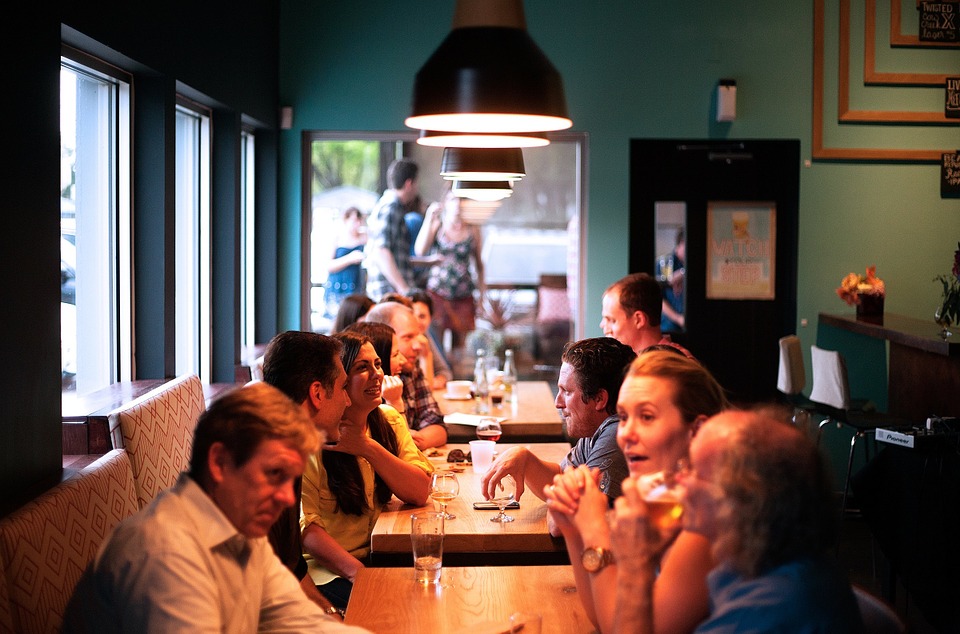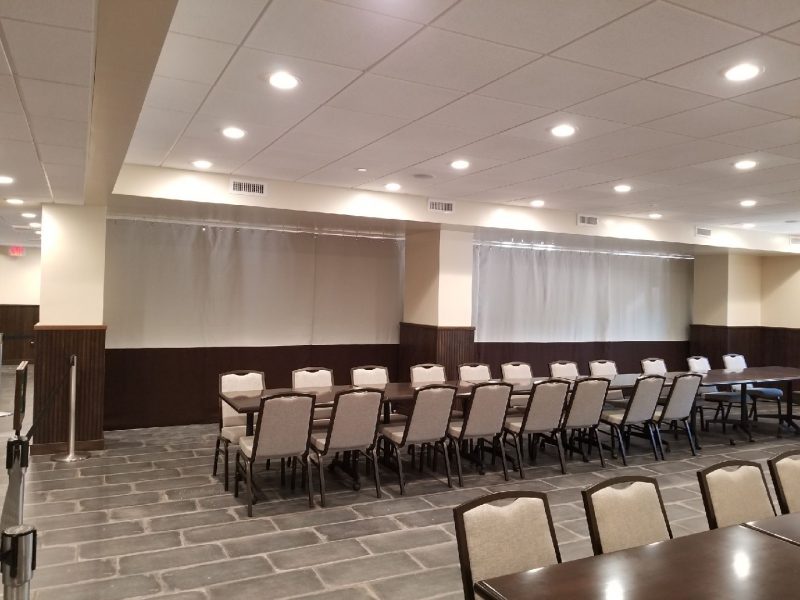No products in the cart.
How Noise Affects Restaurant Acoustics

18
Nov
Many of us have had the unfortunate experience of going to a noisy restaurant and having our meal almost ruined by the loud environment. Many times the owners/managers aren’t even aware of how loud their restaurant really is, mostly from being accustomed to working inside. Customers, on the other hand, do notice and it can affect your business in more ways than you think. There are a lot of different components in a restaurant that can cause it to have poor acoustics.
For example, you may notice that the restaurants you eat at have tile floors or something similar, along with parallel walls. The combination of these characteristics with the liveliness of restaurants causes a bunch of echo and reverberation, which can then ruin your dining experience.
Noise Complaints are Common in Restaurants
According to a 2015 Zagat survey, restaurant noise was the number two complaint among diners. This is right after bad service being the number one complaint. Consumer Reports survey of almost 50,000 readers also reported that one in every four dining experiences warranted a noise complaint.
Conversation is one of the most important things lost when noise becomes a problem. Restaurant Briefing reported that on average, customers have noted noise levels of 80 decibels or higher in restaurants. Noises that go above 60 decibels (the average level of two people chatting) can disrupt conversation and make it harder to enjoy your meal.
Protecting Employees from Noise
Customers aren’t the only people affected by noise problems. Sometimes employers forget or aren’t aware of the detrimental effects of loud noises. Occupational Health and Safety Administration (OSHA) monitors volume to protect employees from environments that could cause hearing loss over time. OSHA’s standards include a maximum noise level of 90 decibels (the equivalent of the average lawn mower) per every 8 hours and 95 decibels per every 4 hours.
Oxford University experimental psychology professor Charles Spence mentioned that noise levels in many restaurants go around 100 decibels. This is like dining next to a tractor or hand drill. Imagine having a conversation like that?
Is Taste Affected by Noise?
The Food Quality and Preference science journal published a 2010 study that showed participants could perceive saltiness and sweetness much better when eating with quiet or no background noise. On the other hand, participants that ate the same food but with loud background noise could not perceive tastes as well as the other participants. This suggests the taste of the food itself can be altered just from noise.
Sound can be a positive thing to use in a restaurant and it can be a way to create a nice background for people to enjoy their food. Of course, this is only achievable if used in the right way. University of Manchester had a study in 2012 that found people enjoyed their food more when it was accompanied with background noise, like soft music, while participants who ate with 80-decibel white noise in the background reported dulled flavor perception.

This restaurant was having sound transfer issues between dining rooms. This soundproof curtain partition helped fix that issue.
Soundproofing Restaurants with Curtains
We have had many restaurant owners and managers become clients, using our soundproof curtain tracks to divide restaurant space and create modular dining rooms. These may be retracted when needed, and provide a great way to segment the restaurant from noisy parties.
Case Study: Soundproofing Partition
Our sister company, Commercial Acoustics, also does a lot of projects involving restaurant acoustics. Acoustic absorption panels are one of the main methods used to improve the acoustics in restaurants. The panels are typically wrapped in fabric that matches the wall they hang on so the aesthetics of the space aren’t disrupted. These panels help to absorb the excess echo in a space so that you guests will be able to have a normal conversation and not need to yell at each other to be heard.
Case Study: Sound Absorption in Restaurants
Proper Restaurant Acoustics
So you know how excess noise in restaurants can put a damper on your dining experience, now here’s how to fix that. In this situation, don’t be afraid to speak up and tell your server that it’s way too loud. If a restaurant gets enough noise complaints from its guests, they’ll most likely do something about it especially if its impacting business.
There are several obvious reasons why you should watch out for loud noises and to make sure, if you’re the manager, that the restaurant stays at a noise level appropriate for conversation. We hope this was helpful whether you’re a restaurant owner or a curious reader, and if you have any more questions don’t hesitate to reach out!
